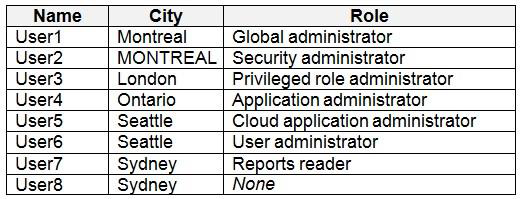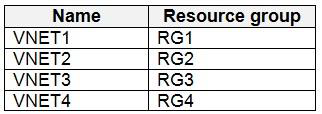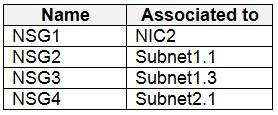This is a case study. Case studies are not timed separately. You can use as much exam time as you would like to complete each case. However, there may be additional case studies and sections on this exam. You must manage your time to ensure that you are able to complete all questions included on this exam in the time provided.
To answer the questions included in a case study, you will need to reference information that is provided in the case study. Case studies might contain exhibits and other resources that provide more information about the scenario that is described in the case study. Each question is independent of the other question on this case study.
At the end of this case study, a review screen will appear. This screen allows you to review your answers and to make changes before you move to the next sections of the exam. After you begin a new section, you cannot return to this section.
To start the case study
To display the first question on this case study, click the Next button. Use the buttons in the left pane to explore the content of the case study before you answer the questions. Clicking these buttons displays information such as business requirements, existing environment, and problem statements. If the case study has an All Information tab, note that the information displayed is identical to the information displayed on the subsequent tabs. When you are ready to answer a question, click the question button to return to the question.
Overview
Contoso, Ltd. is a consulting company that has a main office in Montreal and two branch offices in Seattle and New York. The company hosts its entire server infrastructure in Azure.
Contoso has two Azure subscriptions named Sub1 and Sub2. Both subscriptions are associated to an Azure Active Directory (Azure AD) tenant named contoso.com. Technical requirements
Contoso identifies the following technical requirements:
-Deploy Azure Firewall to VNetWork1 in Sub2.
-Register an application named App2 in contoso.com.
-Whenever possible, use the principle of least privilege.
-Enable Azure AD Privileged Identity Management (PIM) for contoso.com
Existing Environment
Azure AD
Contoso.com contains the users shown in the following table.

Contoso.com contains the security groups shown in the following table.

Sub1
Sub1 contains six resource groups named RG1, RG2, RG3, RG4, RG5, and RG6.
User2 creates the virtual networks shown in the following table.

Sub1 contains the locks shown in the following table.

Sub1 contains the Azure policies shown in the following table.

Sub2

Sub2 contains the virtual machines shown in the following table.

All virtual machines have the public IP addresses and the Web Server (IIS) role installed. The firewalls for each virtual machine allow ping requests and web requests.
Sub2 contains the network security groups (NSGs) shown in the following table.

NSG1 has the inbound security rules shown in the following table.

NSG2 has the inbound security rules shown in the following table.


NSG3 has the inbound security rules shown in the following table.
NSG4 has the inbound security rules shown in the following table.

NSG1, NSG2, NSG3, and NSG4 have the outbound security rules shown in the following table.

Contoso identifies the following technical requirements:
-Deploy Azure Firewall to VNetwork1 in Sub2.
-Register an application named App2 in contoso.com.
-Whenever possible, use the principle of least privilege.
-Enable Azure AD Privileged Identity Management (PIM) for contoso.com.
Hide Case Study